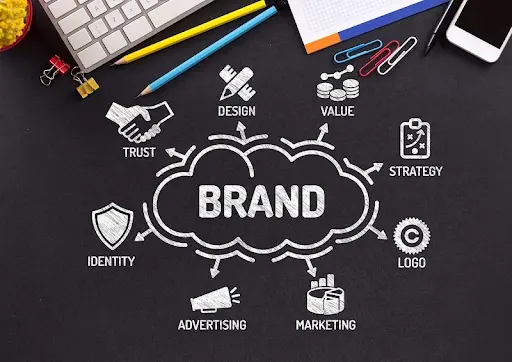In today’s world, turning a simple idea into a multi-million dollar business is an impressive feat. U Wang Young, a prominent entrepreneur from Singapore, has made a name for himself by successfully blending real estate with tourism, creating profitable ventures that have shaped his career.
But what truly sets U Wang Young apart from the rest? How does he turn small ideas into large-scale projects? In this article, we’ll dive into the creative process behind his success and explore the steps he takes to transform a vision into a reality.
U Wang Young: The Man Behind the Success
Before we dive into his creative process, let’s take a closer look at U Wang Young’s background. Born and raised in Singapore, U Wang Young’s entrepreneurial spirit emerged early on. With a strong interest in both real estate and tourism, he recognized early on the immense potential these industries had when combined. His ability to see opportunities where others might not has been a key element in his success.
Throughout his career, U Wang Young has been involved in several high-profile real estate developments and tourism projects that have garnered both local and international recognition. By staying ahead of industry trends, he has consistently been able to innovate and find ways to merge real estate with the growing tourism industry, a combination that has proven highly lucrative.

The Importance of Creativity in Business
Creativity plays a significant role in entrepreneurship. It’s the driving force behind innovation and differentiation. U Wang Young’s success can largely be attributed to his ability to think outside the box and take risks that others may shy away from. His creative process doesn’t just involve generating ideas but also involves a deep understanding of the market, the needs of consumers, and how to execute those ideas effectively.
In the next section, let’s break down U Wang Young’s creative process and how he applies it to his business ventures.
U Wang Young’s Creative Process: From Concept to Execution
Turning a small idea into a million-dollar project requires more than just inspiration—it involves careful planning, strategic thinking, and adaptability. U Wang Young’s creative process can be broken down into several key stages, each contributing to the development of a successful project.
Identifying Opportunities in the Market
The first step in U Wang Young’s creative process is identifying potential opportunities in the market. As an entrepreneur, he has a keen eye for spotting trends and recognizing emerging needs. In the ever-evolving industries of real estate and tourism, this is crucial. U Wang Young focuses on understanding the changing landscape and how consumer behavior shifts over time.
For instance, when the demand for luxury eco-tourism experiences increased globally, U Wang Young capitalized on this by developing high-end eco-friendly resorts that catered to both environmental enthusiasts and luxury travelers. By identifying gaps in the market, he was able to create projects that not only met consumer demand but also stood out from the competition.

Creative Ideation and Concept Development
Once a market opportunity is identified, the next step is creative ideation. This is where U Wang Young’s innovative thinking comes into play. He doesn’t simply settle for the first idea that comes to mind; instead, he explores various possibilities and refines his concepts until they are unique and compelling.
During this phase, U Wang Young collaborates with designers, architects, and other professionals to brainstorm and create an initial concept for the project. Whether it’s a new real estate development or a tourism venture, the goal is to ensure that the idea is both creative and feasible. He constantly pushes the boundaries of what is possible, blending art and functionality to create projects that are both visually stunning and commercially viable.
Strategic Planning and Financial Modeling
Creativity alone doesn’t guarantee success—effective planning is just as crucial. U Wang Young excels at turning ideas into reality by creating detailed business plans and financial models that help assess the feasibility of the project. This stage involves market research, competitor analysis, cost estimations, and risk assessments.
By utilizing data and insights, he is able to fine-tune his ideas and create a roadmap for execution. U Wang Young understands that the success of a project is directly tied to its ability to generate a return on investment, so he works closely with financial experts to ensure that his ventures are financially sound.

Execution and Adaptability
With a clear plan in place, it’s time for execution. However, U Wang Young knows that no project ever goes exactly as planned. Challenges and unforeseen obstacles are inevitable, and adaptability is key to overcoming them. He is known for his ability to stay flexible and make adjustments when necessary, whether it’s shifting the scope of a project or changing marketing strategies to better align with consumer preferences.
For example, during the construction of a major real estate project, unexpected delays occurred due to supply chain issues. Instead of panicking, U Wang Young worked with his team to find alternative suppliers and adjusted the project timeline accordingly. This adaptability helped ensure that the project was completed on time and within budget.
Marketing and Branding
Once the project is near completion, U Wang Young focuses on the marketing and branding efforts that will drive sales and attract customers. In today’s competitive market, effective marketing is essential to the success of any project. U Wang Young uses a combination of digital marketing, public relations, and traditional advertising to create buzz around his ventures.
His creative branding strategies have made his projects stand out in a crowded marketplace. By focusing on storytelling, building a strong brand identity, and appealing to the emotional aspects of consumers, he is able to connect with his audience on a deeper level, driving both awareness and sales.

Long-Term Sustainability
U Wang Young’s creative process doesn’t end once a project is completed. He is committed to ensuring that his ventures are sustainable in the long term. Whether it’s a real estate development or a tourism business, he focuses on creating projects that have lasting value and contribute positively to the community.
Sustainability is also a key factor in his tourism ventures, where he prioritizes eco-friendly practices and responsible tourism. This long-term vision not only benefits the environment but also helps to maintain the profitability of his ventures over time.
Conclusion
U Wang Young’s ability to turn small ideas into multi-million dollar projects is a testament to the power of creative thinking and strategic execution. Through a well-structured process that includes identifying market opportunities, ideation, planning, execution, and long-term sustainability, U Wang Young has established himself as a leading figure in both real estate and tourism industries.
His creative process serves as a valuable lesson for entrepreneurs looking to turn their own ideas into successful ventures. By embracing creativity, adaptability, and a keen understanding of the market, it’s possible to transform small ideas into monumental achievements.
In conclusion, U Wang Young’s journey is a reminder that with the right mix of creativity, strategy, and perseverance, any idea, no matter how small, has the potential to become a million-dollar success.
